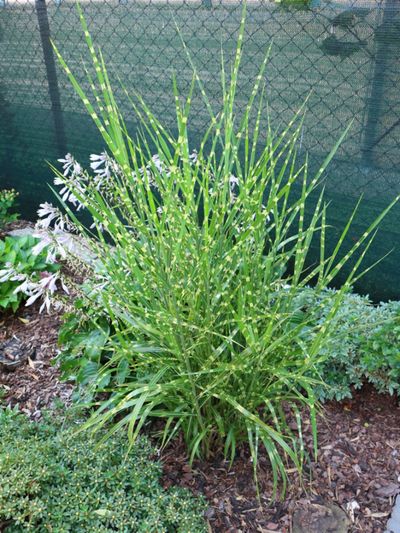What is Porcupine Grass?
Ornamental grasses come in a wide array of growth habits, tones, and sizes. They are classed by their temperature needs as warm season or cold/hardy grasses. Ornamental porcupine grass is a warm season species which is not hardy in freezing temperatures. It resembles zebra grass but holds its blades more stiffly and doesn’t tend to fall over as much. Porcupine maiden grass (Miscanthus sinensis ‘Strictus’) is a member of the Miscanthus family of graceful arching grasses. It is an ornamental upright grass with golden banding on the blades as if it was always in a dappled pool of light. This unique foliage bears horizontal golden bands, which some say resemble porcupine quills. In late summer, the plant forms a bronze inflorescence that rises above the blades and waves a plumed head in the wind.
Growing Porcupine Grass
This maiden grass makes an excellent specimen plant and is spectacular in mass plantings. It can get 6 to 9 feet (2-3 m.) tall. Try growing porcupine grass as an accent or even a border, for a low maintenance and top performing plant. The plant is hardy in USDA plant hardiness zones 5 to 9 and thrives in full sun where the soil is moderately moist. This grass does best in full sun but can also perform well in partial shade. It is remarkably unfussy about soil and will flourish even in soils which get repeated flooding. The one thing it cannot tolerate is excess salt, so it is not recommended for coastal planting. In massed groups, plant the grass 36 to 60 inches (91-152 cm.) away from each other. It does tend to send out a lot of seed and can become an aggressive, invasive plant. This is likely due to the fact that growers leave the inflorescence on until spring because it adds interest to the winter garden. You can also cut it off and cut back the grass once the blades begin to brown for the season. This will provide you with a “fresh canvas” in which to enjoy the bright spring growth on ornamental porcupine grass.
Porcupine Grass Care
This is a fuss free plant, with no major pests or diseases. They do sometimes get rust fungus on the leaves, however, which can mar the beauty but will not harm the vitality of the plant. Best growth is achieved with plenty of water. The plant is not drought tolerant and should not be allowed to dry out. Once the plant is several years old, it is a good idea to dig it up and divide it. This will provide you with another plant and keep the center from dying out. Divide and re-plant in the spring just before new growth begins to show. Some gardeners cut back the foliage in late winter to early spring as part of porcupine grass care. This is not strictly necessary but is aesthetically more pleasing than new green growth poking through old brown growth. Porcupine grass is an excellent addition to the landscape and bestows elegance and year-round beauty.
